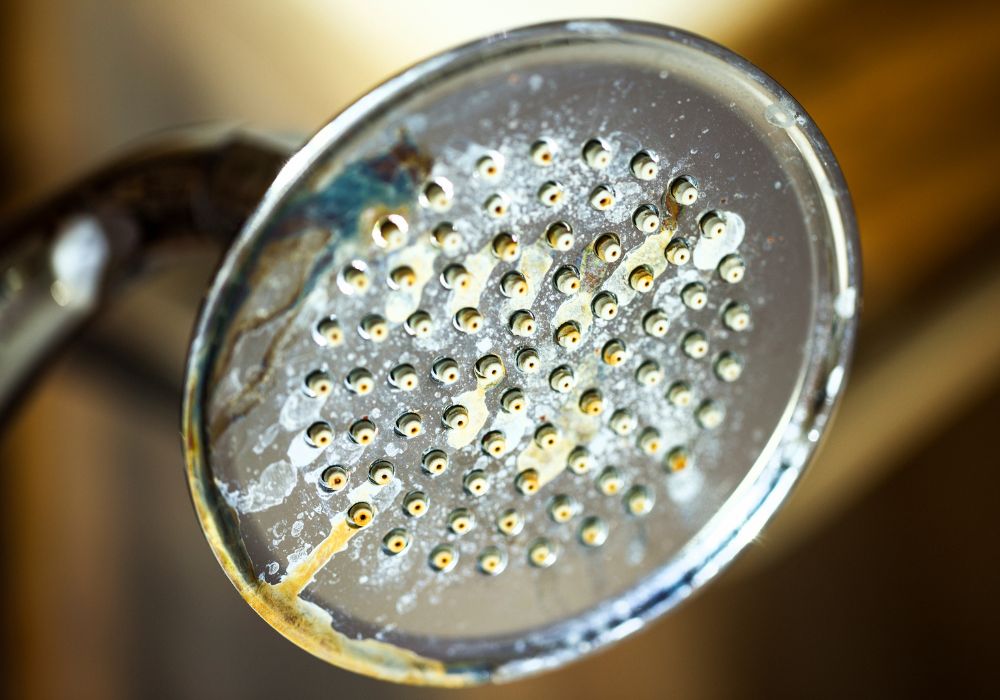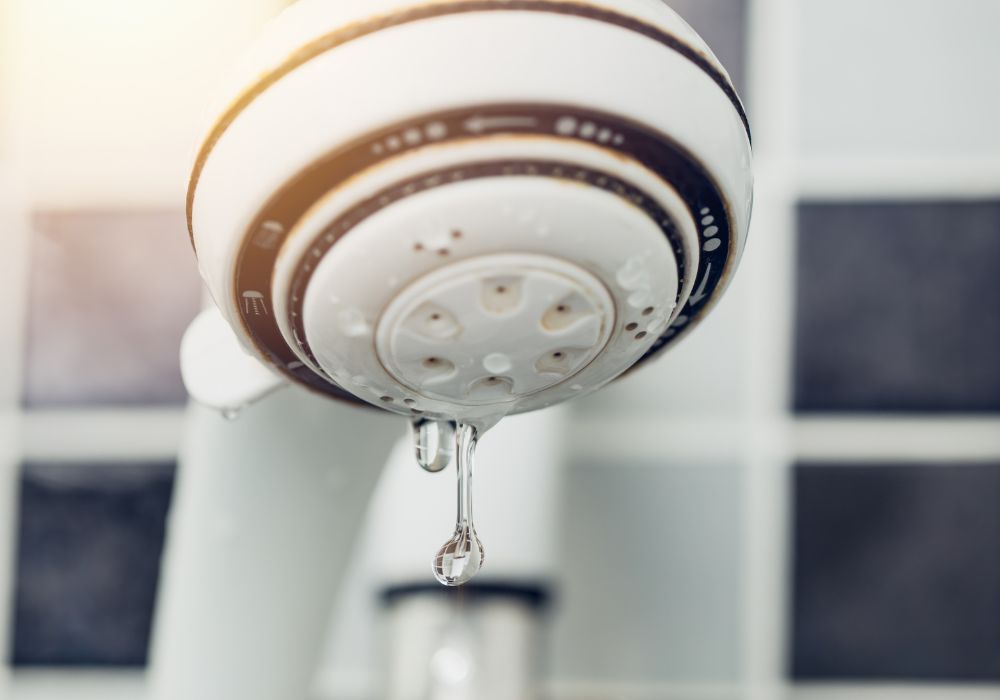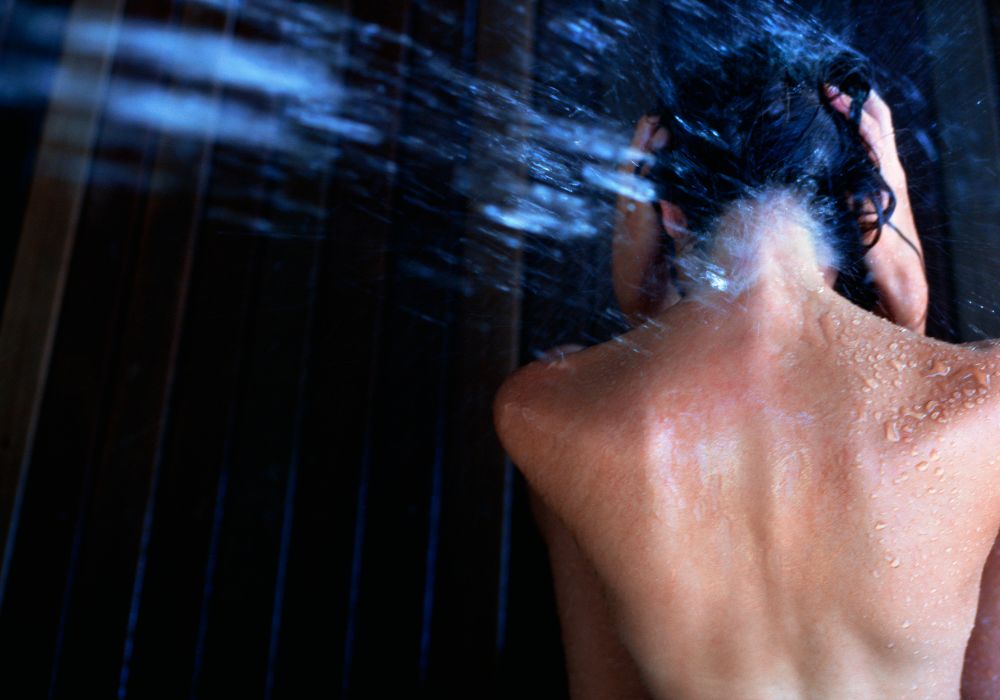An aging water line can cause numerous problems that create inconveniences when we do our chores or conduct our daily hygiene routine. Some examples of the potential problems we observe are leaking and contaminated water due to rust and accumulated debris.
But the most prominent problem with an old pipe is that sometimes little or even no water comes out. Aside from the deterioration of the pipes, what other factors contribute to why no water is coming out of the shower head?
Possible causes include low shower pressure, leaks from the pipes, and too high water pressure for the shower head to handle.
In today’s short but informative article, I will share with you further details about the possible causes of why no water is coming out of the shower head.
And then, I will provide you with possible solutions that’ll put back the water pressure of the shower in working order.
Why Is No Water Coming Out Of My Shower Head?

You don’t necessarily need the help of a plumber when you are having issues with water pressure in your shower. Some problems are minor, and you can fix them independently without their assistance.
But if there’s significant damage, like worn-out pipes or faulty regulators, never hesitate to contact your local plumber for assistance. Don’t attempt to fix it alone because it might lead to further damage.
In any case, the following are the possible reasons you must look at as soon as you observe that no water is coming from your shower head.
Possible Reason 1 – Low Shower Pressure
The most common reason why little to no water is coming out of the shower head is low water pressure. The culprit for the low water is due to several issues, such as a depreciated pipe, closed valve, faulty water regulator, or clogged pipe.
An aging pipeline could lead to the buildup of debris and mineral deposits. Constant exposure to water and humidity results in rusting, which also contributes to the accumulation of debris that hinders the normal flow of water.
And since there are a variety of causes, the solution you have to take on also differs, which includes the following:
- Firstly, you can try replacing the old showerhead with a new one and see if it solves the problem
- To clear the pipes from debris and mineral build, a good DIY solution is to fill a plastic bag with vinegar and soak the shower head in it overnight. And then brush off the sediments the next day
- If the valve is causing the issue, then you might need the aid of a plumber since accessing and replacing them can be a little tricky
- But before you contact a plumber, try toggling the switch and see if it fixes the problem
- If the problems are a faulty regulator, worn-out pipes, or malfunctioning heat regulator, then you might need the help of a plumber because doing maintenance could damage your pipeline even further
Possible Reason 2 – Dripping or Leaking Shower Head

Although the common cause of a dripping or leaking shower head is a damaged rubber washer or o-ring, sometimes, the accumulation of minerals and debris could also cause the problem.
And a dripping or leaking shower head also causes low water pressure since it affects the normal flow of water. The buildup of sediments accumulates water that flows continuously even when you turn off the shower’s knob.
In addition, the leaks in your shower head can be inconvenient because they could cause your monthly water bill to go up if you fail to maintain it as soon as possible properly.
Since the problem is also due to the accumulation of sediments, you can fix the issue by cleaning the shower head using vinegar, similar to the DIY solution discussed in the previous section.
A dripping or leaking shower head is also a sign of faulty or damaged pipes or regulators. The damaged pipes or pressure or temperature regulators significantly affect the water pressure from the shower. Thus, it explains why you are experiencing little to no water when using the showers.
When the repairs require the replacement of major parts of the pipes, regulators, or valves, you shouldn’t perform the task yourself. By doing so, it could worsen the damage that leads to major repairs.
Thus, it would be best for you to contact an expert plumber to repair or replace you.
Possible Reason 3 – Too High Shower Water Pressure

Many homeowners believe setting the water pressure in high mode can fix the problem. Although it temporarily fixes the problem in some instances, it doesn’t provide any help and would even cause more damage in the process.
You must note that constant high water pressure puts too much tension on your home’s plumbing system. In the long run, it results in the fast deterioration of the pipes and regulators, leading to leaks to your showerhead or any water outlet in your home.
If you fail to give it immediate attention, the high water pressure flow could further damage it until the pipes can no longer hold water. It could result in lower water pressure, or the pipes burst due to a high volume of water flowing from one end to another.
The simplest solution you can immediately perform if you have issues with low water pressure is to check and adjust the water pressure in your home.
Checking if the water pressure is the quickest solution, especially if you share your home with your family. And this is because there is a possibility that they were unable to adjust the shower’s knob or they are using high-pressure water constantly.
You also have to note that there are showers that have this feature, but the knobs are not visible. If you are unsure where to find them, manufacturers usually place them on the right side of the shower head.
If you notice that only a specific area in your home generates high water pressure water, the issue could be that one pipeline in your home sustained damage.
As a reference, the normal water pressure of your home’s water outlets should not generate a pressure of over 80 PSi. Water pressure above the recommendation could damage the pipes due to the tension of flowing water.
You must adjust the regulators at the standard pressure of under 80 PSi to fix the high water pressure. However straightforward as they may look, adjusting the regulators can be a little tricky. And adjusting them the wrong way could worsen the problem instead of fixing it.
If you are unsure how to adjust the water pressure regulator, you can always seek the advice of an expert plumber before attempting to perform the task. Or, you can ask them to come over and have them evaluate your pipeline to see if other damages are causing the low water pressure.
Related Questions
How To Increase Water Pressure In Shower?
To increase the water pressure in your shower, below are simple recommendations that will fix the issue of low water pressure—
- First and foremost, clean the showerhead
- If cleaning the shower head doesn’t work, you can replace the shower head altogether
- Install an electric shower accumulator tank
- Install a shower pump
- Install a pressurized unvented cylinder
- You can try installing a power shower apparatus to regulate water pressure and temperature in your shower
Will a Clogged Shower Eventually Drain?
Shower drain clogs that are mild will eventually drain. The water won’t drain fast as you shower, but you’ll notice that it clears afterward as the water pushes the debris blocking its way.
However, severe clogs in the shower drain do not fall on their own because debris, mineral deposits, and other sediments will accumulate every time you use the shower.
How Many Years Does a Showerhead Last?
Most homeowners are unaware that a showerhead has a very short useful life. The suggestion coming from experts is that you should replace your shower head every 6 to 8 months or twice a year.
The replacement of shower heads may not seem that important. However, you may notice a slight change in water pressure as you use them over time.
Even with proper maintenance, the shower head depreciates fast. And there are instances when some issues could be irreparable.
Do Shower Heads Lose Pressure?
Shower heads lose the ability to generate efficient water pressure once they age. The buildup of sediments inside the shower head over time also contributes to its fast wearing and tearing.
Sometimes, the low water pressure isn’t directly coming from the shower head. Other causes include a damaged pipeline or a faulty regulator or valve that needs the expertise of your local plumber.









